This year, we discovered a lot of evidence to suggest that the Sony A7 III is the best Sony camera for astrophotography, and possibly the best camera for night sky photography overall.
Read on to understand how we came to this conclusion.
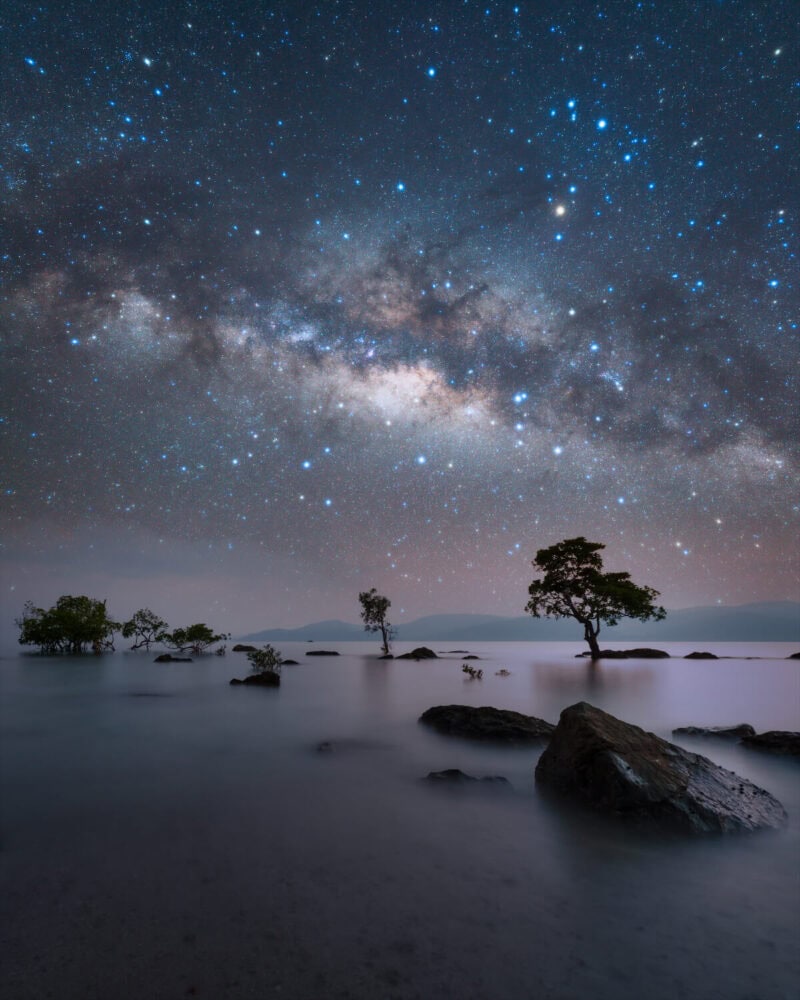
The Evidence
This year we:
- Analyzed 986 images shortlisted for Astronomy Photographer of the Year from 2018 to 2024
- Analyzed 26 images shortlisted for Milky Way Photographer of the Year from 2024
- Presented 30+ new case studies from some of the best astrophotographers in the world
From this there was a common thread with regards to the camera which kept coming up top for landscape astrophotography – the Sony A7 III.
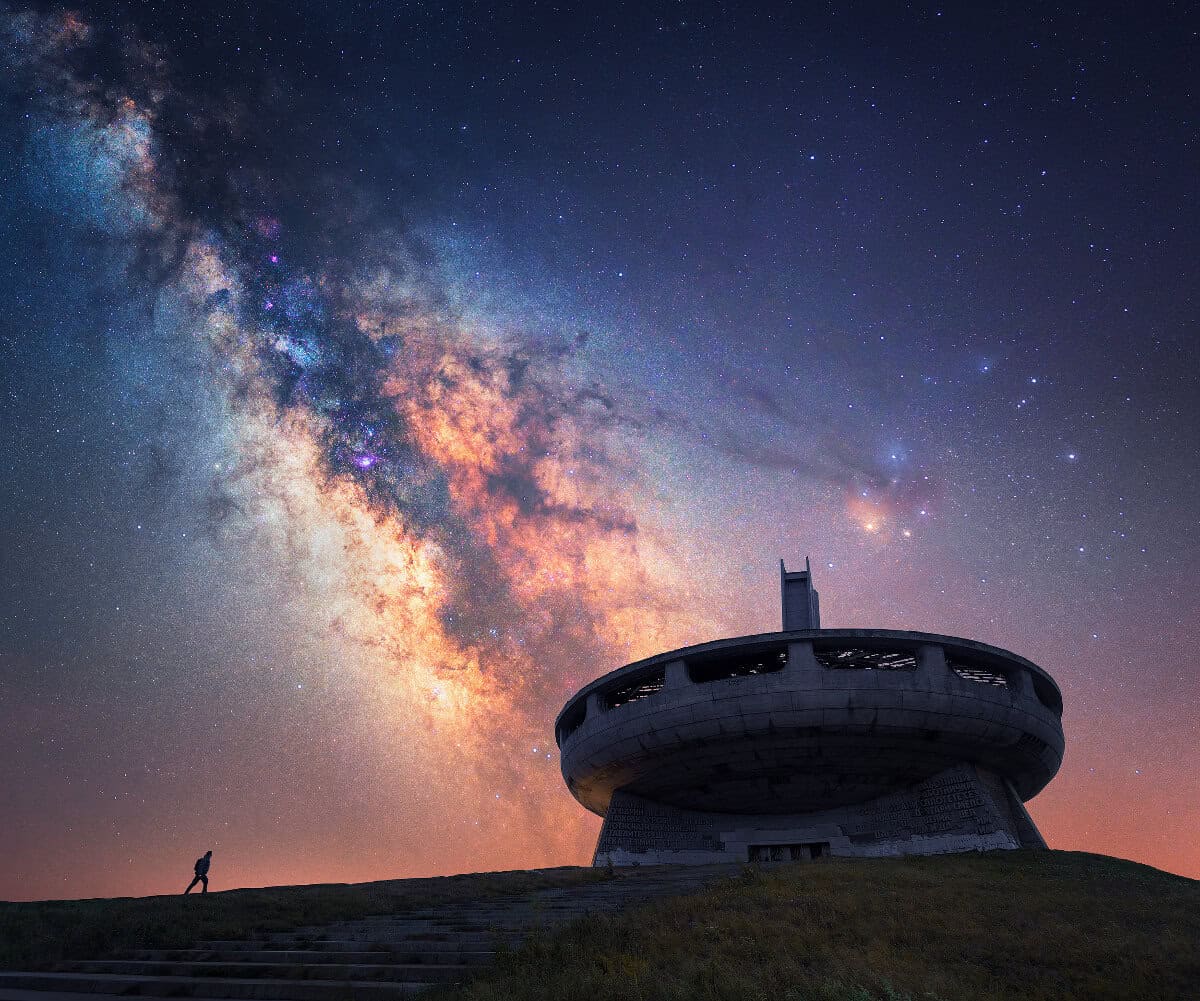
Astronomy Photographer of the Year
In our study, we examined 986 images shortlisted in the most prestigious astrophotography competition in the world – Astronomy Photographer of the Year.
We narrowed this down to 366 nightscape images and looked at what cameras were used.
In 2024, these are the cameras used in shortlisted images:

If we expand this to cameras in the past three years, then we also see the Sony A7 III up top:
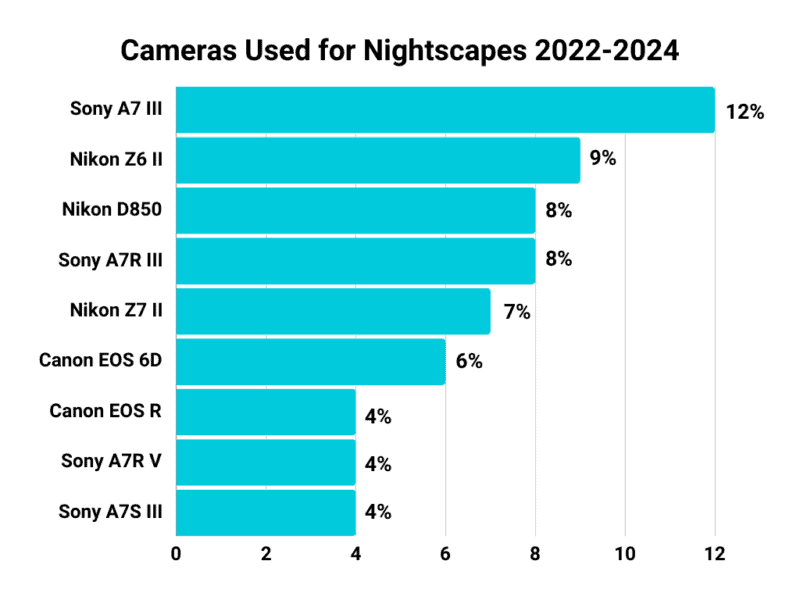
Milky Way Photographer of the Year
Similarly, we analyzed the gear used in the winning images for the Milky Way Photographer of the Year competition and found a similar outcome:
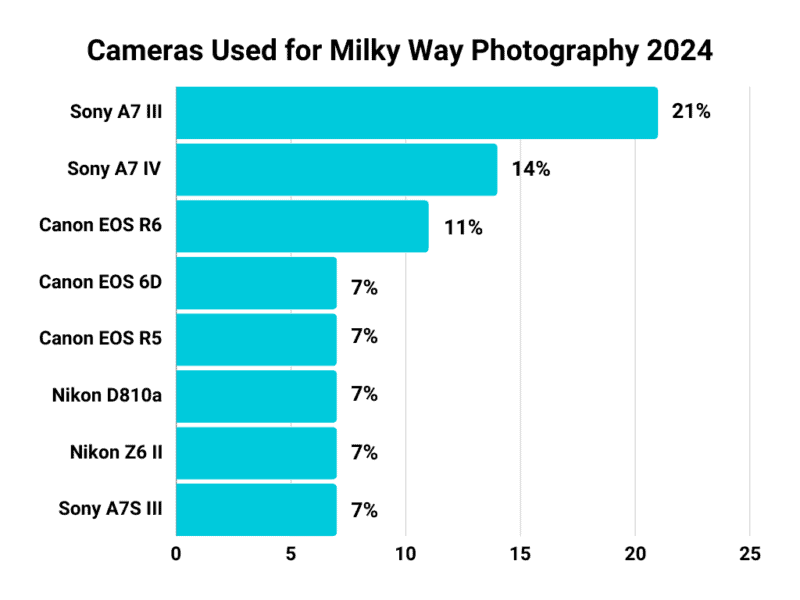
Case Studies
In addition to this data, we have been working with some of the best astrophotographers in the world this year to present case studies of how they go about their art.
When it came to nightscape photography, there was a sizeable majority who were using this same camera.
Some of their images are used in this article, but you can also check the case studies out here:
- Rositsa Dimitrova
- Daniel Viñé Garcia
- Mihail Minkov
- Jakob Sahner
- Burak Esenbey
- Alexis Trigo
- Felix Heisig
- Joao Yordanov Serralheiro
- Camille Niel
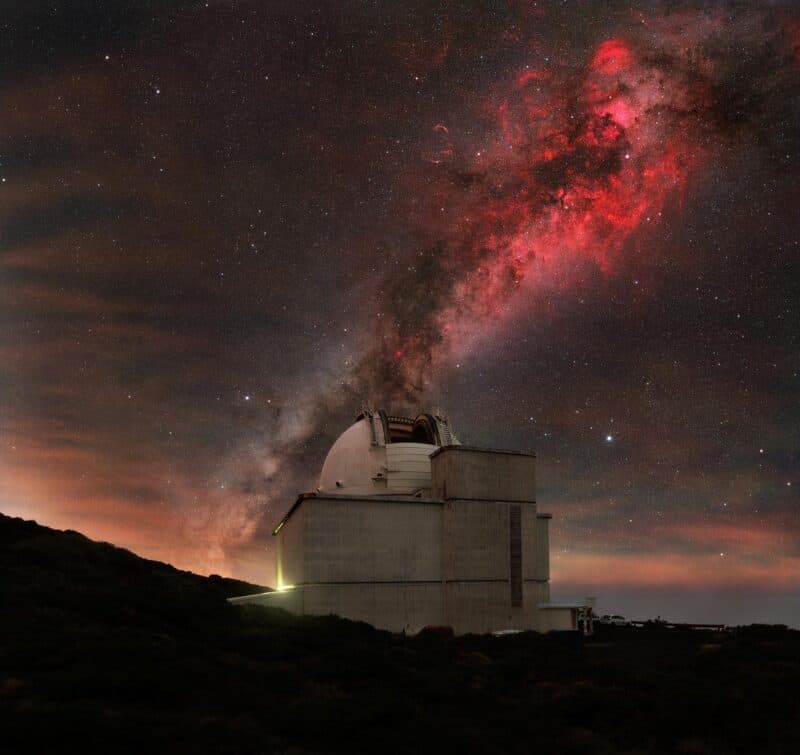
Why is the Sony A7III so good for astrophotography?
When it comes to astrophotography there isn’t really a best camera, but there are common traits.
For example, full-frame sensor cameras perform better in low light and allow you to capture a wider expanse of the sky.
You can read more about this in our article on the best cameras for night sky photography.
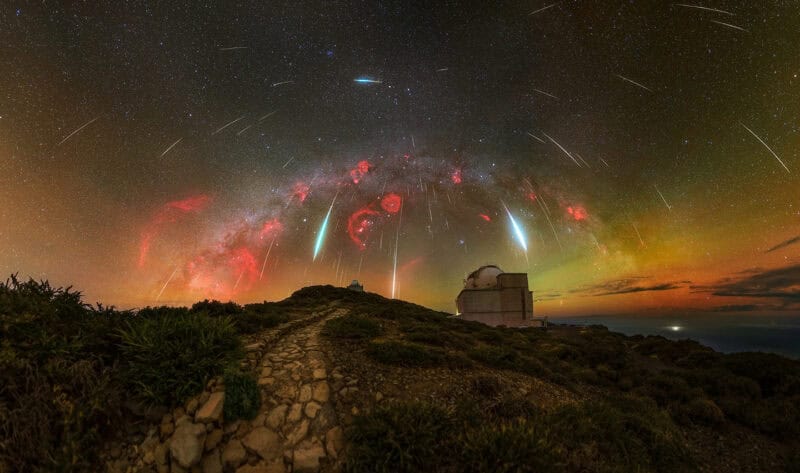
There are also some smaller details which make a difference, like good battery life and – importantly – cost.
The Sony A7 III is not a new camera. It was released in 2018, and its age makes it relatively affordable.
This must be at least part of the reason for its success.
For modern, full-frame mirrorless camera with 24 megapixel resolution it is reasonably priced.
Why pay $4,000 for a camera when you can get virtually the same result for $1,500?
Whilst you can go even cheaper if you were to go for a Sony A7 or Sony A7 II, these are not as good in terms of battery life and and general user experience.
Therefore it hits the sweet spot in terms of performance and value.
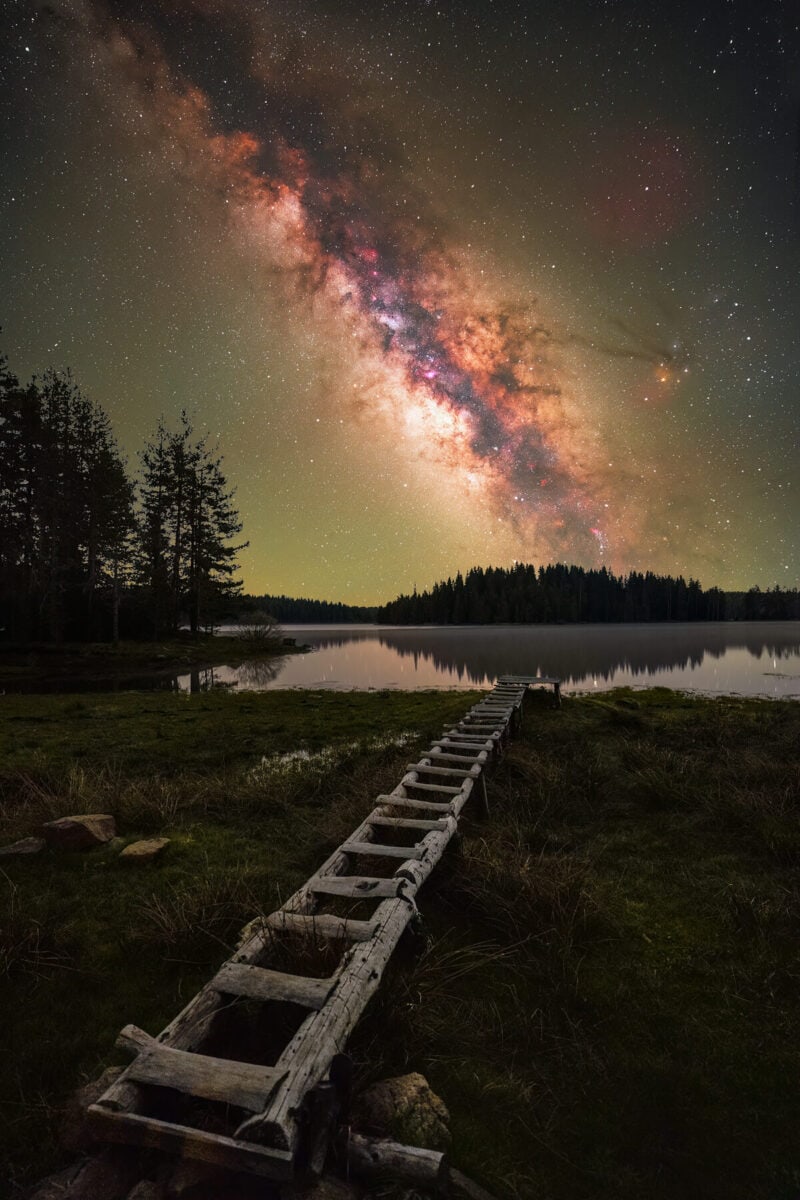
Alternatives to the Sony A7III
The main alternative options to the Sony A7III for astrophotography would be:
- Sony A7 IV – if you want the latest iteration
- Sony A7R V – if you want the top-of-the range Sony
- Nikon Z6 II – if you would prefer a similarly priced (and high performing) Nikon
- Canon EOS R – if you would prefer a similarly priced (and high performing) Canon
Astro-Modification
One thing to note is that many of the photographers in these competitions and case studies used an astro-modified Sony A7 III.
Astro modification is where a camera has part of its filter removed to allow it to process color from the night sky better.
To get a astro-modifed Sony A7 III you can either:
- Buy a pre-modified version – see here
- Buy the regular model and then have it modified by a company – see here
If you want to understand more about astro-modification, see our article here.
Related Content & Further Reading
You can watch our video covering this topic here:
Note this camera is also referred to as the Sony ILCE-7M3 and Sony Alpha III.
Thanks to Royal Museums Greenwich in London, UK who host the Astronomy Photographer of the Year competition and provided us with the data to examine and images to use.
You can visit the exhibition and buy the book with all the shortlisted images here.
If you want any further information then check out these links:



I used to think my a7iii was better for astro than cameras with higher resolution sensors until I did my own tests comparing its 24 mp sensor with the 61 in my a7Riv.
S/N ratio does not tell the entire story. Reason appears to be that our modern denoise programs produce better results filtering the fine grain noise of the denser 61 mp files while allowing small stars to pass. Denoising the coarser 24 mp files with coarser grain sacrifices more small stars.
When I realized this, I no longer had need for the a7iii, so when the a7Rv was released I sold the a7iii to fund the new purchase.
If you look at the method used in the Skies & Scopes study it does not address the quality of the images from these cameras. It only reports the prevalence of use. The a7Riii was a very popular camera with high value for its price. This is a mistitled article mistaking prevalence for best results. Note that the camera with the cleanest high ISO night images, the a7Siii, came out at the bottom since so few are in use by landscape photographers. But if you want to do the least denoise, then this 12 mp camera would be best.
My astro is now done with my arRv and a7CR, and usually with a Laowa 15mm f2 Zero-D.
Thanks Richard!
Yes, the title is a little provocative but I think the data is relevant since it effectively takes into account the cost of the camera – the latest $4k-$5k camera may be better, but if people are creating images like these with a much cheaper camera then it shows that it is such not a limiting factor.
Also note where the a7Siii is “bottom” – this is just bottom of the top cameras, i.e it was equal 7th most used from many different cameras. The chart would be way too long to include everything!
+1 to all that. I was going to comment that the A7CR is possibly the best alternative but your comment covers that and more.
The og A7C is the cheapest alternative. It’s literally the exact same sensor as the a7iii and sells use for an absolute bargain.
Awesome! Thanks for the tip.